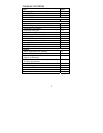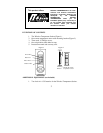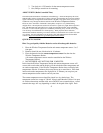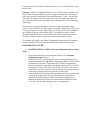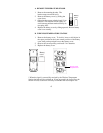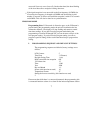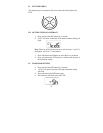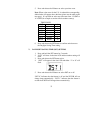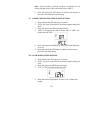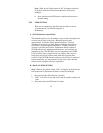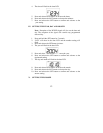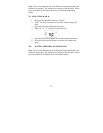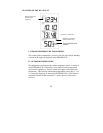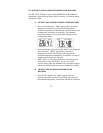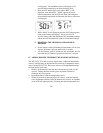
4
2. Two fresh AA 1.5V batteries for the remote temperature sensor.
3. One, Philips screwdriver for mounting.
ABOUT WWVB (Radio Controlled Time)
The NIST (National Institute of Standards and Technology—Time and Frequency Division)
WWVB radio station is located in Ft. Collins, Colorado, and transmits the exact time and date
signal continuously throughout the United States at 60 kHz. The signal can be received up to
2,000 miles away through the internal antenna in the
Wireless Temperature Station
.
However, due to the nature of the Earth’s Ionosphere, reception is very limited during
daylight hours. The temperature station will search for a signal every night when reception is
best. The WWVB radio station derives its signal from the NIST Atomic clock in Boulder,
Colorado. A team of atomic physicists is continually measuring every second, of every day,
to an accuracy of ten billionths of a second per day. These physicists have created an
international standard, measuring a second as 9,192,631,770 vibrations of a Cesium-133 atom
in a vacuum. For more information on the atomic clock and WWVB please see the NIST
website at http://www.boulder.nist.gov/timefreq/stations/wwvb.htm
.
QUICK SET-UP GUIDE
Hint: Use good quality Alkaline Batteries and avoid rechargeable batteries.
1. Have the Wireless Temperature Station and remote temperature sensor 3 to 5
feet apart.
2. Batteries should be out of both units for 10 minutes.
3. Place the batteries into the remote temperature sensor first then into the
Wireless Temperature Station.
(All remote temperature sensors must be started before the Wireless
Temperature Station)
4. DO NOT PRESS ANY BUTTONS FOR 15 MINUTES.
In this time the Wireless Temperature Station and remote temperature sensor will
start to talk to each other and the display will show both the indoor temperature and
an outdoor temperature. If the Wireless Temperature Station does not display both
temperatures after the 15 minutes please retry the set up as stated above. After both
indoor and outdoor temperatures are displayed for 15 minutes you can place your
remote temperature sensor outdoors and set your time.
The remote temperature sensor should be placed in a dry, shaded area. The
temperature sensor has a range of 330 feet. Keep in mind that the 330 feet is in open
air with no obstructions and that radio waves DO NOT curve around objects. Actual
transmission range will vary depending on what is in the path of the signal. Each




